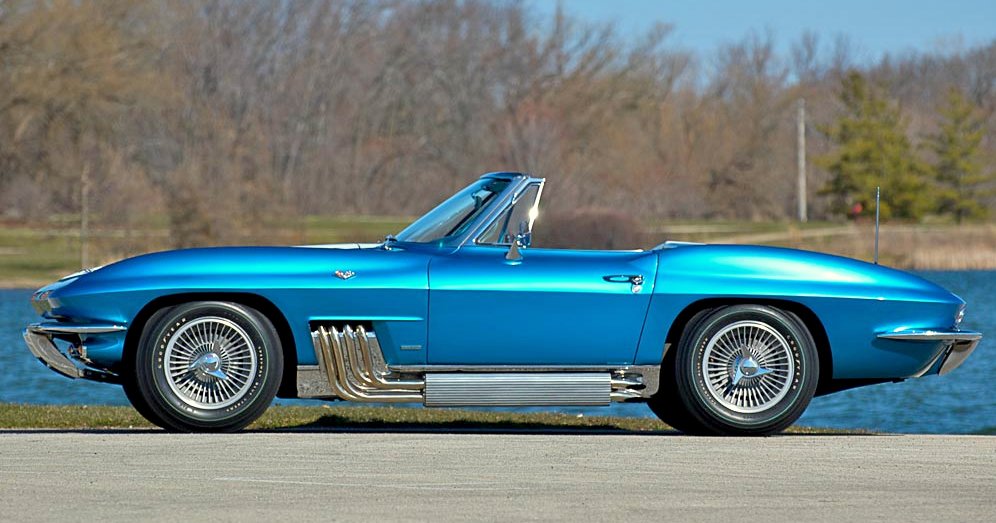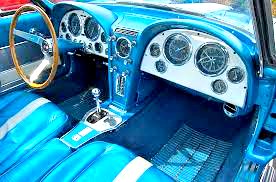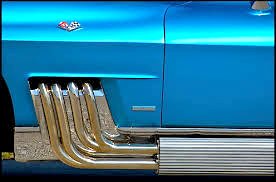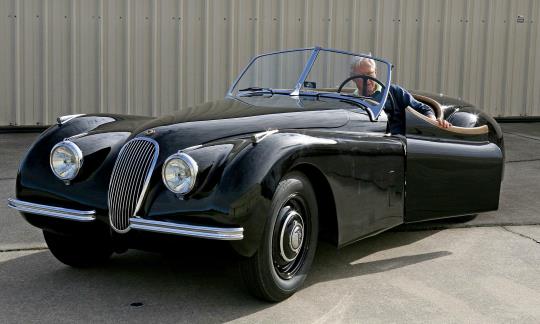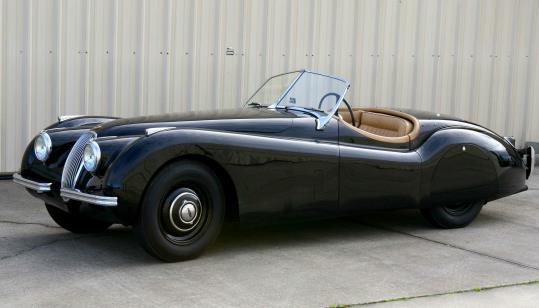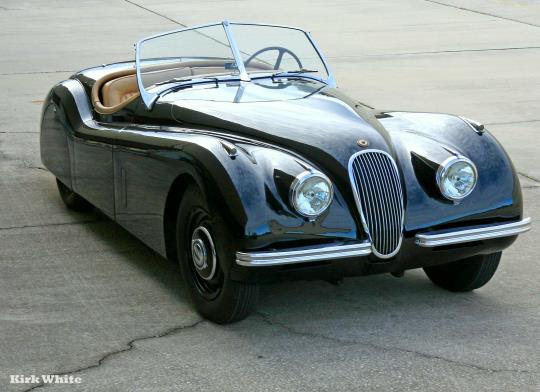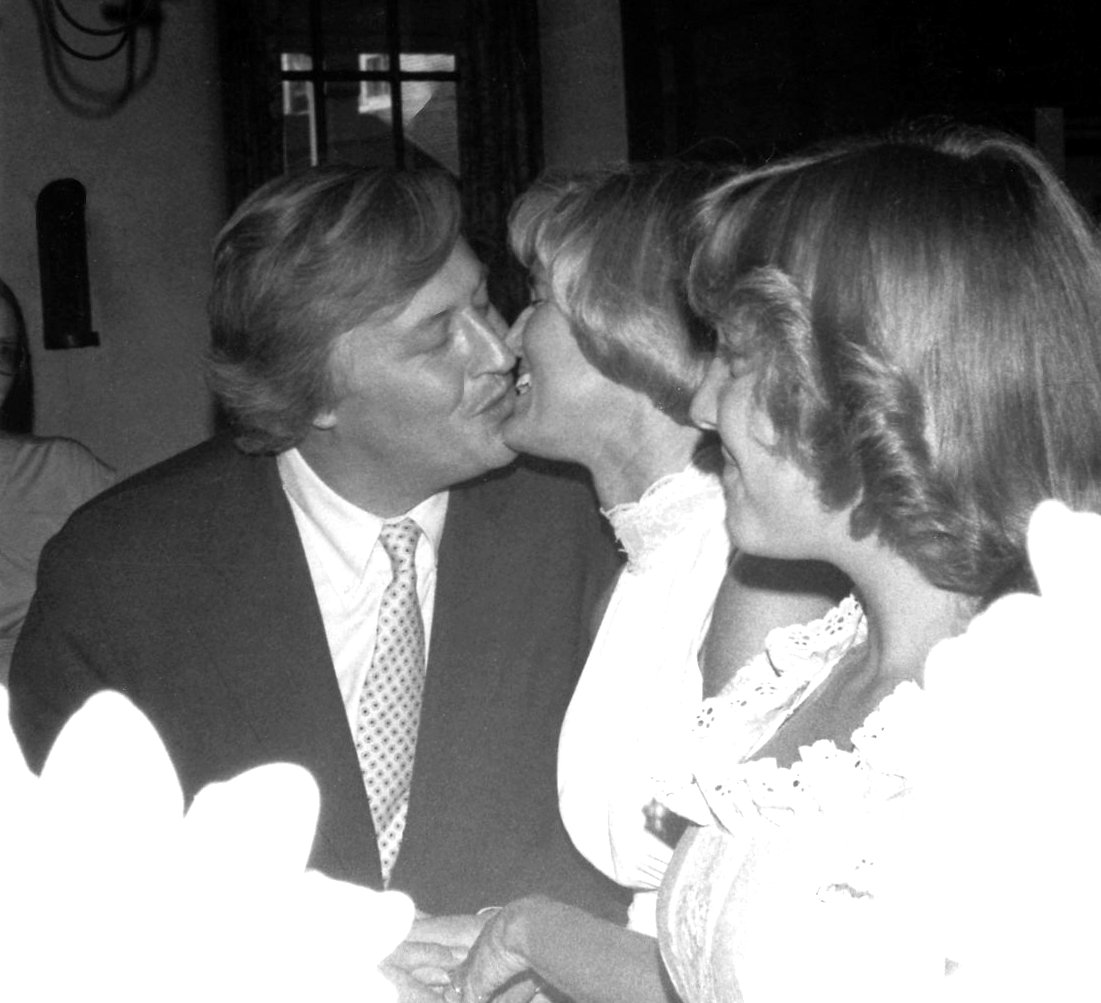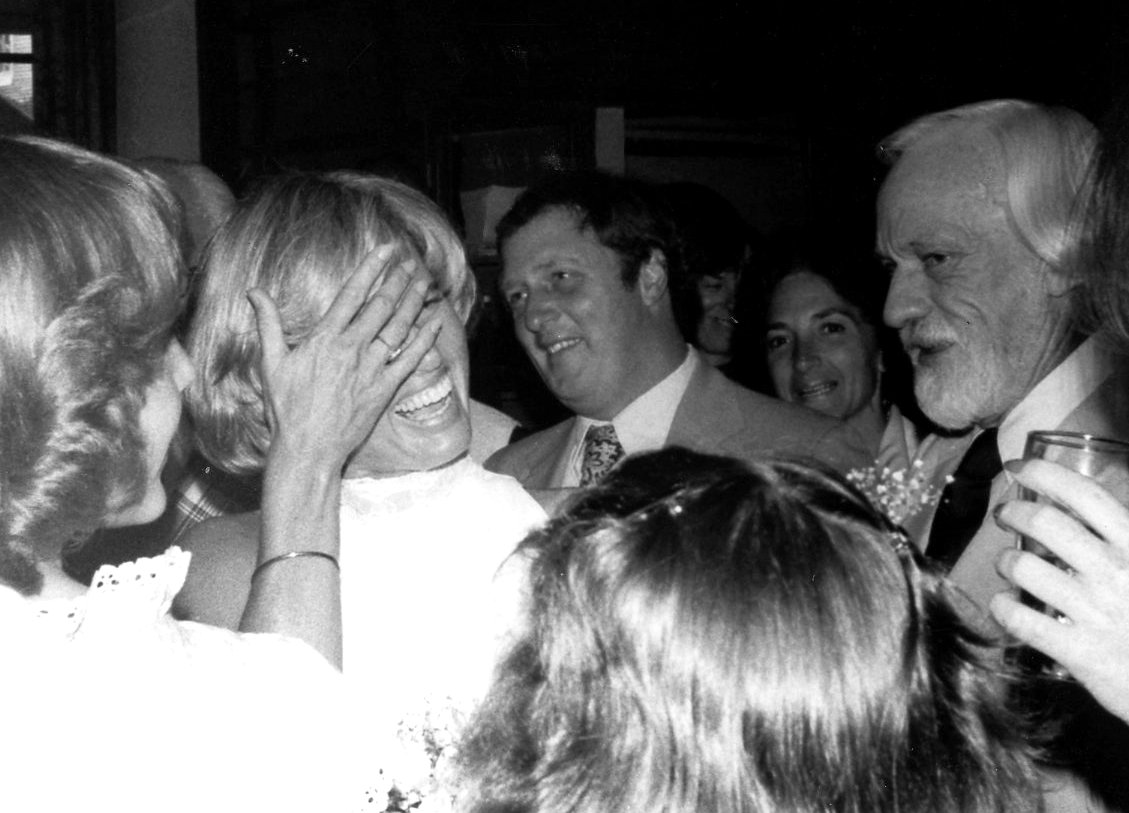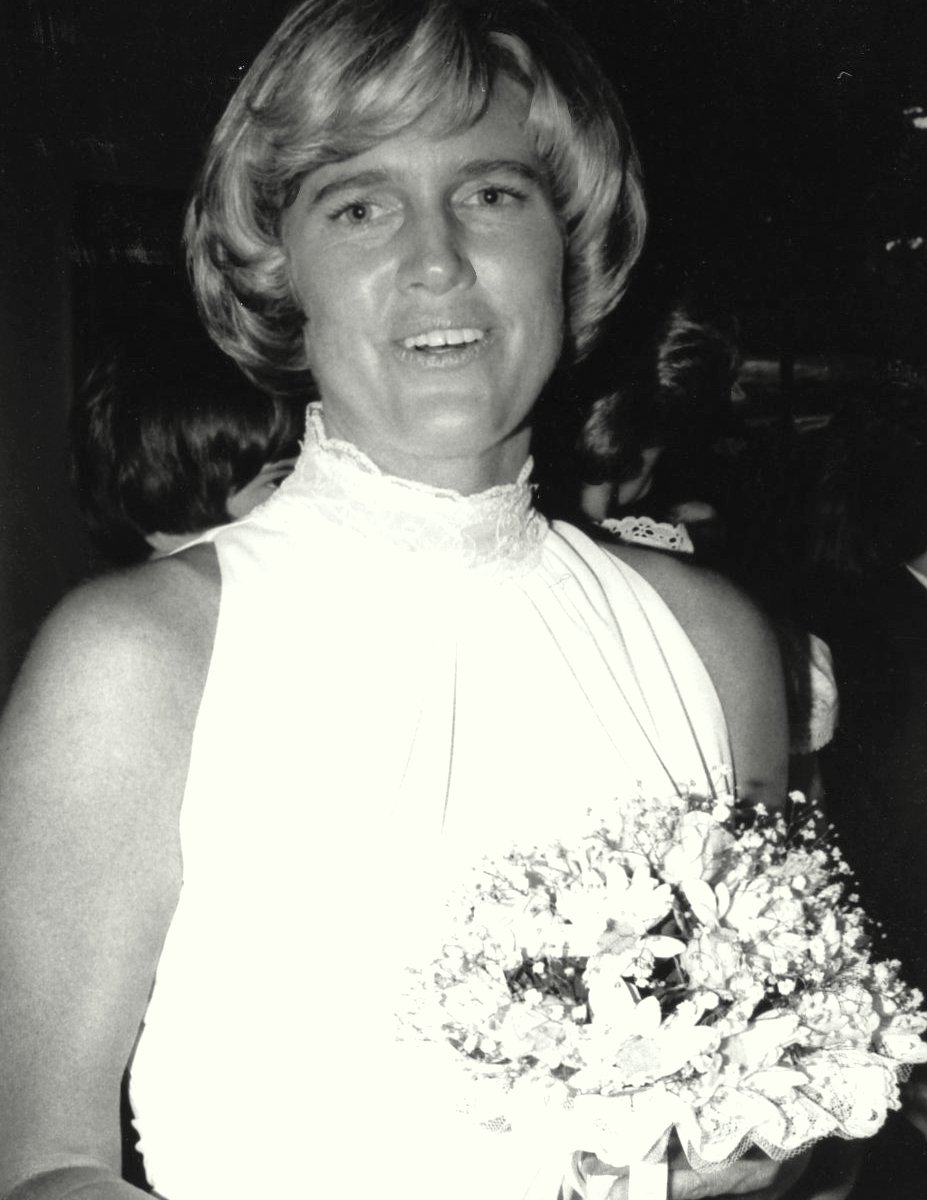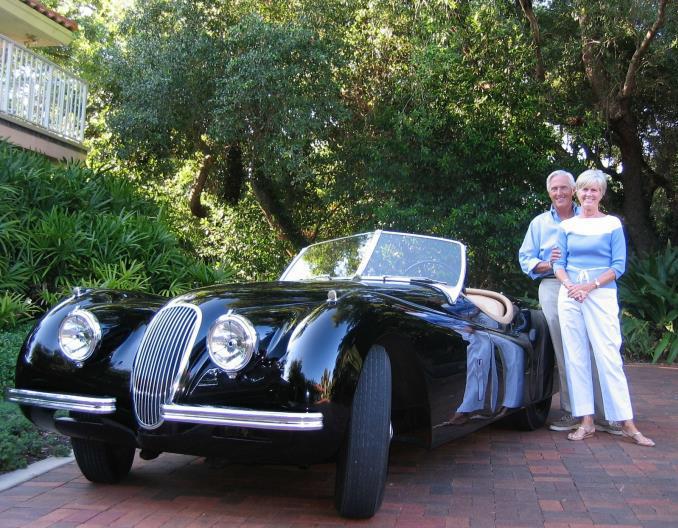666
THE MERCEDES BENZ STRIKE . . .
It was in the fall of 1979. Memory tells me it was just at the introduction of the 1980 models that the “Metalworkers” Union in Germany called a serious labor strike. The metalworkers Union was known for being particularly difficult in negotiations and prone to digging in their heels.
The Automakers throughout Germany would be brought to a standstill.
Suddenly, the Mercedes Benz dealer network would be receiving nothing in the way of new cars. This was a stunning blow, particularly at the beginning of a new model run.
But, the Metalworkers were well aware of their timing, weren’t they?
I didn’t pay a great deal of attention to the strike as I didn’t feel it would jiggle my wholesale business much one way or the other.
That impression lasted less than two hours. Late in the morning of the day the strike became official, I received a telephone call from a major Mercedes dealer. He was local to the Philadelphia area and over the course of the last few “bumpy” years, he had pretty much turned his back on me and walked away.
But today, it seemed the dealer needed something. After four hard years of working morning, noon, and night, word “on the street” was “Kirk's back.”
“Kirk, do you think you could find some available new Mercedes in stock with other agencies that they may wish to sell?” And he ran down a list of models he would take and my cut per car.
“I expect that I can . . .,” I answered having no idea whether I could or could not!
Chapter 24
667
I hadn’t the foggiest idea of how I would pull off such a deal. I’d never taken a crack at busting through the door of a Benz agency and suggesting, in the midst of a sudden strike, that they may have some of their new Mercedes Benz models that they might sell off to an unknown wholesaler, from, where was it?. . . Upper Darby, Pennsylvania?
Hhhmmm . . .
Well, I thought, this strike may possibly be a perfect scenario.
I again returned to my, now well oiled, “cold call” telephone practice. (God bless Bob Brooks!) I got a directory covering all of the Authorized Mercedes Benz dealers in North America.
I worked the telephone from home as it was easier being alone to suffer the abundance of negativity that always came with cold calling.
(. . . So, where was home at that point, Kirk? Just a few weeks back Marilyn and I had gotten married and we were living in Marilyn’s lovely home in Wayne, Pennsylvania with her two children, Amanda and “Trip”.
Below are a few glimpses into that wonderful wedding day at the Marshallton Inn. (Oh, you’re curious as to who performed the Wedding Ceremony? Why, it was Judge Gawthrop, the Judge who had finally brought the Hell of my divorce to a sharp halt just two weeks prior to our wedding ceremony!! . . .).
Oddly, after all the years of terrible trepidation with telephone cold calling, I had reached a point where I actually looked forward to making all kinds of awkward telephone calls.
I confined my search to dealers east of the Mississippi, concentrating on the smaller ones.
Maybe if you were the Mercedes dealer in Erie, Pennsylvania, you weren’t so thrilled when a truck arrived with two highline, expensive, 450SL’s and an SLC. That dealer would have been happier with a mix of the smaller, less costly 240 and 300 diesel sedans.
668
(You may be thinking wouldn’t the dealer know what was on that truck, as he had to have ordered the cars . . .
Well, actually no.
The better part of the dealer’s actual order would be on board, but often a couple of “surprise baubles” would also be coming down the ramps, hence the scenario below . . .)
So yes, Erie said he’d cut one 450SL and an S class sedan loose. And, so it went, banging my way around the country shaking loose an astonishing number of new cars. On a few occasions, the selling dealer would let the RDR card go with a car.
(. . .What the hell is an RDR card, Kirk, and do we really need to know??
This won’t take a minute. RDR stands for Retail Delivery Report and they were precious documents. The dealer who ultimately sold the car to a retail customer and filed the RDR was allocated the same model in subsequent years. The dealer who had sold the car with an “open” RDR would lose that vehicle to the acquiring dealer in subsequent annual allocations.
RDR’s will become the focus of a really “wild and wooly” upcoming adventure . . .)
There were more than a few dealers that would sell me the car and let the RDR card go with it. When those circumstances took place, I would set those “RDR” cars aside so to speak and place that Mercedes with one of the mega-dealers in the Northeast at a walloping profit.
After all, they’d be getting that fancy 450 SL roadster each coming year ad infinitum.
669
WAIT A MINUTE . . .
So, wait a minute, we’re talking a great deal of money here. How was I doing all this? Well, that fancy Philadelphia Mercedes dealer that said he’d take all the Mercedes I could round up, hit the wall by the end of the first week.
They didn’t have the money to continue buying.
So, I turned to Eddie Haskell and Ronnie Tzirlin at Grand Prix Auto Wholesalers on Jerome Avenue, in the Bronx, New York who I had done business with for a number of years.
Sure, you remember my earlier days when I was on that street in New York, often dealing with Stern-Haskell. Jerry’s son Eddie and my Philadelphia pal Ronnie Tzirlin had started their own operation on the Avenue: Grand Prix Auto Wholesalers.
“Sure, Kirk. I’ll get a couple of check books to you and we’ll see what happens.” Said Ronnie.
Really, Kirk? . . . “How the hell did that deal work?”
Well, the way Ronnie and Eddie worked it was that each time I was going to purchase an automobile, I had to call Lynn in the office at Grand Prix and “get a number” for the check. I’d then deposit that check in my Blenheim Mercedes Benz account and complete the purchase, using the Blenheim Motors check. With Eddie and Ronnie’s very deep source of funds, it went very smoothly.
The whole deal really picked up speed and I started getting calls from dealers on the western side of the Mississippi!
I clearly remember a morning when I stopped by our Travel agent’s office to collect eight sets of tickets for drivers headed out to bring in eight different Mercedes Benz.
670
One of those drivers was my son Christopher who was on a school break at the time. He picked up a brand new 240 in West Virginia late in the day. That night on the way back in, Chris had a deer pop straight out into his path and that wiped the front off the 240!
The strike ended after we’d ridden the roller coaster for a good long time.
A week or two later I happened to be in the sales manager’s office when the Mercedes Zone Manager came in. Normally everyone would perk up and want to know who the top selling dealers within the mid-Atlantic region were.
The Zone manager, with a straight face, said: “Kirk White was the top selling “dealer” within The Washington zone!”
AS PROMISED, SWITCHING UP . . .
Toward the close of Chapter 23, I mentioned that a good many of these experiences will be somewhat wide of a chronological order. There are a good many tales where I’ll simply set the time frame and put it to paper.
CARLISLE FALL MEET, 1983
My pal, Dick Miles and I were coming to the end of the big Fall Automobile swap meet at the fairgrounds in Carlisle, Pennsylvania.
Carlisle was always held the week before the mother of all antique automotive swap meets, the annual AACA Hershey, Pennsylvania Fall meet.
Both events were spread over a vast number of acres, each offering roughly eight thousand vendor spaces. Carlisle tended to be more slanted to the post war era. When up and fully underway, both events resembled massive gypsy cities what with the thousands of tents, motor homes, vehicles and parts, and on and on.
671
Carlisle was always a great, festive, and productive time for us and ’83 was a time when the entire collector car hobby was just starting to gain real strength.
Dick Miles and I had had a great week in spite of some rain. We were fortunate enough to have our spaces inside the old metal R Building on the main field of the fairgrounds, not far from the Grandstand.
In 1983 there were only a handful of dedicated structures on the field of the Carlisle fairgrounds. Our building was a deep eight car garage with overhead doors, and we were lucky enough to have secured three of the center spaces.
In that period of time we were having a high old time selling the hell out of vintage European motorcycles, gas engined tether racers, and really great antique automotive toys.
The motorcycles were largely British and Italian. The gas tether racers were American Doolings, Morrison’s, and Cox Thimble Dromes. The early automotive tin toys were very early German, or immediate post war Japanese, clockwork or friction.
The late Dean Hensley was a pal of ours, and each year he would bring his exact replica of Bert Munro’s record setting 1920 Indian Bonneville Scout. People came in droves just to see that amazing motorcycle streamliner. And, that was way before Anthony Hopkins starred in the great movie, “The World’s Fastest Indian!”
Our spaces in the R Building, for any number of reasons, seemed to end up a repository for every off the wall character that entered the grounds. We always had bizarre types coming and going through the building, along with a few who were actually living on planet earth!
This particular year we had brought with us Ed La Belle’s legendary Vincent Black Lightning motorcycle. It was a record holding drag racing, 1,100 cc motorcycle that La Belle had run successfully for years all over the east coast drag strips. It was a nitro burning grenade with pipes the size of your forearm.
672
Miles was, and still is a master at getting people into our place, not necessarily to buy anything but a crowd around any stall would always attract others, and often that would include the odd buyer or two.
We would get to Carlisle early in the week, usually Tuesday midday. We discovered early Wednesday morning that whenever Dick fired up that Nitro burning Black Lightning, the Vincent would fire out an exhaust volley that covered the entire fairgrounds. The incredible burst of violent power being unleashed would stop everyone in their tracks. Always has, always will.
“It seems to be coming from over there . . .” and they’d point toward the area of our building.
A serious racing engine, when lit off will always draw a crowd. It seemed as if almost everyone on the grounds would rush over, crowding around our spaces.
Dick would give them a brief bit of time to enjoy it, then he’d cut it dead. The silence was awesome.
Afterward, someone might walk up and say “How much is your Triumph TR 6C?” Or, “My Granddad has a gas engined model racer just like the one on your table there . . .”
And, Dick had another wonderful draw that lured them into our building, so to speak.
Dick has this ancient small ice fishing stove that he always had burning away softly for warmth, cooking hot dogs, or he’d put it just inside the building with a sauce pan of Castrol R very lightly simmering away. The racing car and motorcycle freaks couldn’t get enough of the rich Castrol R aroma.
Castrol R racing oil always takes you straight back to any racing venue on earth. It was, and always shall be, intoxicating.
I’m not so sure the women who came by were quite so taken with the Castrol R . . .
So, enough already, about our magic tricks at Carlisle.
673
A BADLY MISSED STITCH IN THE GRAND TAPESTRY OF LIFE . . .
Bud Sammis and Jay Storch were two clever, quite successful automobile dealers who also came each year to Carlisle with very good vintage and High Performance cars to sell.
Their offerings each year were always amazingly diverse.
You might well find a 1953 Cadillac El Dorado parked next to a totally restored Crosley Hot Shot with an SCCA history, and next to it was a ’54 Dodge Coronet 4 door with 12,300 one owner miles that Bud had bought from an elderly widow on their way into Carlisle!
They always sold a very high percentage of their cars. A good many people came to see them faithfully each year.
They were sharp merchandisers.
Jay was always prowling all of the fields for fresh cars, and he’d always get more than a few bought.
The Friday night at the end of our Carlisle week, it had rained to beat the band. Saturday was always the last day for Dick and me as we would move our dog and pony show to Hershey the following week.
Saturday afternoon, Dick and I were breaking everything down and packing when Jay Storch came by and told me about an unusual ’63 Corvette that had just come on the grounds in the past few hours.
“It looks like it might be a factory experimental, or show car,” Jay said.
674
“In what way” I asked.
“Well, it’s got fancy outside exhausts, an unusual interior, and a second set of gauges over to the right where the glove box would be . . .”
“GM just doesn’t let those factory built special projects loose. It sounds like a Sting Ray that’s been hot rodded,” I said.
“I don’t think so . . .”Jay said. “Come and look at the car with me.”
“What kind of shape is it in?” I asked.
“Pretty run down,” said Jay.
“How much is it?”
“The guy wants $9,000 . . .,” said Jay.
“Nah, what in the world would I do with a hot rodded ‘63 Corvette convertible at $9,000?”
“Take a minute, come and look at this with me” said Jay, somewhat insistently.
(This is where it starts to get good. . .)
“Where is it?” I ask, like if it was more than 20 yards away, I didn’t want to bother to look at it!
“It’s over there on the hill” Jay said, vaguely pointing way, way over there.
“Dick and I are about to roll on out of here, and I’m not that good with Corvettes anyway.”
Jay was tenacious; “You’re fine with a car like this; come on, walk over and look at it . . .”
675
Sure enough the car was forever and gone and over hill and dale. Finally after very long hike in soaking wet umowed field grass, we came upon the Sting Ray. I took note when we got there that there were a good dozen people around the car.
Just people that had come to have a look at something they hadn’t seen before. A Corvette that was altogether different than any Corvette they’d ever seen.
The car was stone dead tired, sitting at a steep angle in tall,wet grass up to its knees. The metallic blue paint with chunks of paint breaking away was shot.
The intricate, fancy exhaust headers came out through the fenders behind the front wheels. They were heavily rusted as was all of the trim. The interior was shot.
The Corvette had the standard 300 HP engine. There was an instrument cluster on the right side of the dash. I had to admit that cluster was quite a piece of work, and certainly looked like it wasn’t done in someone’s back yard. The car, in general, though was just awful.
But Jay had seen it through better eyes than I had that day.
I finally concurred with his feeling that GM may well have built the car.
But I allowed a late Saturday afternoon on a wet sloping hillside, with no owner present to answer any questions, to affect my judgment.
I passed.
A good many years later, in 1999, the car turned up at the Barrett-Jackson Auction in Scottsdale, Arizona. I saw the car do $152,250 at that Barrett Jackson sale late Sunday afternoon. I thought to myself that had I carried out a restoration to that level, at $152K I’d probably simply be taking my money back. Maybe there was a ham sandwich left in the car. I put the Corvette out of my mind.
Then in the spring of 2010, the car sold at a Dana Mecum Auction for $980,000! By that time, it was well known as the very special Harley Earl Corvette. Harley Earl, of course, had been one of the General Motors, larger than life, styling Vice presidents.
676
(Kirk, I thought you said GM didn’t let the factory special styling cars loose . . .)
Here are the facts on the car as stated for the Mecum sale:
- The personal car of GM designer Harley J. Earl. Custom built Sting Ray given to Harley J. Earl as a gift from GM.
- (Shop Order) S.O. 10323
- 327/300 HP engine
- Stainless steel side-exit exhaust
- Knock off wheels
- 4 speed manual transmission
- Metallic Blue, custom Blue leather seats with white trim
- Stainless steel door and foot well inserts with plush carpeting
- Unique one-of-a-kind instrumentation (1965-67 flat design)
- Special unique gauges including altimeter, accelerometer, inside/outside temp, and vacuum pressure
- 1965 style 4-wheel disc brakes and dual circuit power brakes
- A mainstay of the Bloomington Gold Special Collection, the Harley J. Earl Corvette is a one-of-a-kind factory special with singular historic pedigree!
Since that sale, the car has changed hands well above a million dollars . . .
Don’t worry; I’ve got a hundred more of these “Boneheaded” tales for you .
HERE’S ONE THAT STAYED!!
Here’s where we kick the “way back” machine into gear . . .
677
In the late fall of 1969, I received a telephone call from Tom “Dutch” Shappell in Reading, Pennsylvania. I had heard about “Dutch.”
A very careful buyer, Tom only acquired exceptional automobiles.
Tom introduced himself and said he had seen our ads in the New York Times. He had just acquired a remarkably fine 1952 Jaguar XK 120 roadster with just over 50,000 miles. It had been purchased new by a gentleman from the Reading area named Wolfe, who was a true sports car enthusiast. Wolfe had competed on occasion in the well known Reading Hill Climbs with the Jaguar.
I had heard enough about Tom and his operation that I decided to go up to Reading and, if nothing else, have a look at Tom’s operation.
Shappell Motorsport wasn’t a large operation but it was neat and was clearly being run as a business.
And there, front and center was this extremely handsome 1952 XK 120 roadster in a rich deep black lacquer with a tan leather interior. It was equipped with the rear fender skirts, or “spats” as the British referred to them.
Of course in 1969 the Jag was merely 17 years old. Just a used European sports car. And in going around the car there were a few items that weren’t so hot. Right in the driver’s immediate view were the mounting holes for the single racing windscreen, and there were a few areas where the paint had been cleaned and waxed to an extent that the primer was faintly visible. The front bumpers could stand to be replated . . .
“Tom, how much is the car?”
$2,700 he said.
I wheeled out my short list of faults and said I could pay $2,400.
“I’ll sell you the car for $2,500. No less,” said Tom.
678
I went around the car again, and the more I went over the car the more the Jaguar reeled me in. I was simply drawn to the Jag in the altogether. I bought the car. I asked Tom if I could leave the Ferrari that I’d driven up with him and send a driver for it.
I just wanted to drive that Jag back to Philadelphia. It was nice day for an open British sports car. I suppose I still had a soft spot for that wonderful XK 120 Drophead Cabriolet that I purchased in the early sixties that had really been the European sports car that had gotten the ball rolling.
I took all back roads returning to Philadelphia, and I was completely taken by the Jaguar. It wasn’t the ripping acceleration or the cosmetics, but it was the thoroughly lovely exhaust note and the overall charm of that beautiful body shape, and the car had torsion bar front suspension so the ride was quite comfortable.
The brakes were hard work, the steering was heavy at slow speed and the Moss gearbox and I might have to go to dancing class to get to hopefully know one another . . .
Once back at the agency, I found myself taking the car for the drive home quite often.
Then someone came in and walked right past the Ferraris, Maseratis, Porsches and 300 SL’s, straight up to the Jaguar.
“How much is this Jag 120??”
(It’s not for sale, buddy, step away from the car . . .!!)
‘Wow, I wasn’t planning on selling that car” . . .”
So, I figured I’ll pull both pistols and kill him.
$5,700, I said.
If he had asked to drive it, I probably would have told him we were waiting for a fuel pump, or a distributor rotor or a whole new bottom end for the motor.
But, all he said was. “I’ll take it.”
679
Look around you Kirk, you’re surrounded by all manner of ultra high line European cars!
Get over it!
And I did, and for the next number of years we rode the high speed line all the way to the end.
Then one morning in the summer of 1977, Tom Shappell called:
“Hey, Kirk,” said Tom, with his Pennsylvania Dutch accent, do you remember that Jag 120 I sold you a while back?
“Sure,” I said.
“I’ve got it back and it is just the way I sold it to you. Against my paperwork, this past owner only drove the car just over 300 miles.”
I could easily recall the last drive I had from Tom’s place. It had been one of those special days.
“I need $4,300 for the car, and I promise you, it is every bit as good as when you bought it before.”
I folded like a cheap suit.
“Okay, I’ll take it . . .”
It was just as much fun as the first time, except now I had Drexel Motors money in the Jaguar. Westburg, who owned Drexel Motors, was always edgy with all European automobiles manufactured outside of Germany. I phoned the secretary in the Upper Darby office, and I told her that I had purchased the Jaguar so she could enter the check in the books.
But then, I drove it home to Deepdale Road, and frankly treated the car as if it was my very own instead of an inventory car that should have been put up for sale right away!
After two plus weeks, Jim Westburg said to me: “Didn’t we buy some kind of Jaguar several weeks ago?”
680
I babbled something about having gone way out of the way to oversee the replacement of the “frasticator” springs and the car should be just about ready to come to the showroom on City Line Avenue.
It was a Friday afternoon when I was in the midst of driving the Jag into the showroom through front sliding glass doors.
Suddenly I heard a car screech to a halt in the middle of the City Line Avenue and out jumped Vincent Kling, the famed architect (and my buyer of that wonderful Ferrari 275 GTB/4 that we read about earlier in this tome).
“How much is that black Jag you’re driving?” he shouted across the lanes of traffic.
(. . .Wait a minute, what the Hell, I was planning on having the car on the floor, and, if nothing else, simply enjoying it. Now here’s Vincent Kling about to ruin it . . .)
Well, I’d get him out of the way quickly: “It’s $10,000!” I shouted out into the middle of City Line Avenue.
At that point in time a truly fine 120 roadster, all the way out, was worth $6,000, maybe a tick more.
. . . $10,000 ought to buckle his knees, I thought . . .
“I’LL TAKE IT! I’LL COME BY IN THE MORNING, GET YOU PAID AND TAKE IT ALONG . . .,” yelled Mr. Kling.
Groan, there it goes again.
AND . . .
In the mid-eighties, an issue of Hemmings Motor News arrived. Hemmings at that time was the monthly clearing house for a vast number of exciting automobiles in America. I always checked the Jaguar classifieds in Hemmings, to what end I couldn’t have told you.
681
That is, right up to the issue that I had in my hands.
I had quickly scanned the ads for Jaguar and was about to move on, when my eye was drawn back to a tiny two line advertisement. It rang just enough bells to read it again.
1952 – Roadster – original – black / Tan, a telephone number just a few towns away.
I called the number. A soft spoken man answered the phone and his answers were quiet and brief. It was easy to see he was shy on the telephone with strangers. He lived in Norristown in an edgy neighborhood.
“Where did you buy the car?” I asked him.
“From Mark Smith in Fort Washington,” he said.
He was selling the car for $15,000, cash only! So, I thanked him for his time and said I’d be in touch.
I called Mark Smith, and, yes, he had taken the car in trade from Vincent Kling and sold it to the gentleman right there in Norristown.
I called back and said we’d like to see the car in the hope of buying it.
Marilyn and I drove over there. I had $15,000 in cash in my pocket.
There it was. The owner had put the black convertible top on the car which was the original issue. The car looked utterly terrible with the old dusty wrinkled top in place.
Trying to avoid eye contact with the top, I went around the car, and indeed the old gal had stayed pretty much the same although the interior was becoming edgy. The owner went over in detail the maintenance, repairs etc. that were carried out during his ownership.
682
One bit of work that he carried out was removing all four braking assemblies and having the drums trued and then truing each of the brake shoe assemblies, making for considerably more efficient braking.
It was nice to get back into the driver’s seat.
It was near nightfall when we left for home, so I had to call up the Lucas lights and wonder of wonder, they lit!
With these wonderful old cars, you can never be sure about when they may decide to stop and take a rest. The streets out of that area of Norristown were now filled with skulking types that made me more than a bit nervous, but somehow we made it through unscathed with no stoppings or failures.
A couple of months later George Hankle, Philadelphia’s top interior and trim man installed a new interior, retaining all of the original bits that we could.
You’ve watched me let many spectacular automobiles slip through my fingers over the years. I’ve loved them, driven them thoroughly, tucked away the wonderful memories and passed them on to others to enjoy.
Many went on to be good investments, as well as being great beauties and particularly significant to automobile history.
But this one has remained with us: Never regarded as an investment, never will turn us into a Bill Gates or a Warren Buffet. . .never intended to. But like a faithful pet or a well loved shoe, left to remain just itself, taken everywhere, even taking it to Maine with us, and enjoyed for all these forty years.
Credit - Steve Robertson
Today, if I back my chair away five feet away from this computer, there the Jaguar still sits, a few feet away in my shop / garage.
It now has 63,800 miles. Changes? Sure, we now live in Florida so the car carries an aluminum radiator and an electric fan if the need arises. At some point, the aluminum skinned driver’ door had a few very small dings and I had them removed. Bob Barber, as always, caught a perfect paint match and we were good to go.
683
I rarely take it to shows, as it is certainly no showboat! But eight or nine years ago Bill Warner invited Marilyn and I to bring the car to the Amelia Island Concours. Unlike most of the entrants, we drove the car up from New Smyrna, taking the scenic coastal route. The morning of the show I toweled it down and drove onto the show field. Every car around me was zippity over restored. They didn’t look like they left the fact0ry in 1939 or 1955. Most appeared as if they had been put together just hours before the show and then dipped and re-dipped any number of times in a clear coat!
(Alright Kirk, back away from that subject or you’ll fry the computer . . .)
We had a terrific day. I was amazed at the number of people who appreciated the originality of the car and smiled about the graceful way it was getting on in years.
The highlight was when the judges approached. I told them the car was for display only, and not to be judged.
“We’re here to take some notes on how an XK 120 actually was when it left the factory,” the judges said! They were all over the car. Up under the dash, in the trunk and they spent a lot of time all across the firewall.”
“Made my day” . . . one of the judges said, as they moved on to the next Jaguar.
Maybe three years back I felt it was time to overhaul the top end of the motor. I called Terry Larson who is the very top guy in this country with Jaguars. Could Terry recommend someone to rebuild the cylinder head on a survivor 120 Jag? He immediately recommended Bill Terry in Illinois. When Terry got the head he called me to go over what he was planning to do.
At the end of the conversation, he said:
“Your cylinder head will come back to you all cleaned up and looking brand new!”
684
“No, no, thank you, Bill, the engine is all original so I want to retain the 50 plus years of patina.” He understood. The car had quite a lift in performance once back together and the patina was still the same.
Just as an aside, those matched brake shoes and drums, added by the young man in Norristown, have never required attention through our many years of ownership.
(. . .Yeah, yeah, I know, too much windy commentary on an old Jag . . .)
Well, here’s a News Flash!
We have made a family commitment until February 26,
so Chapter 25 will go up on Thursday: March 9, 2017.


